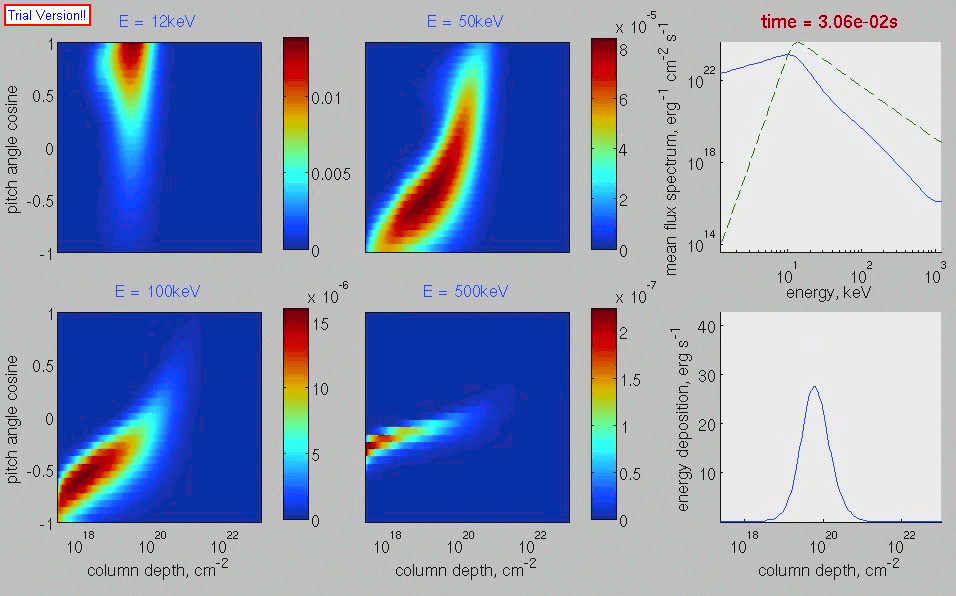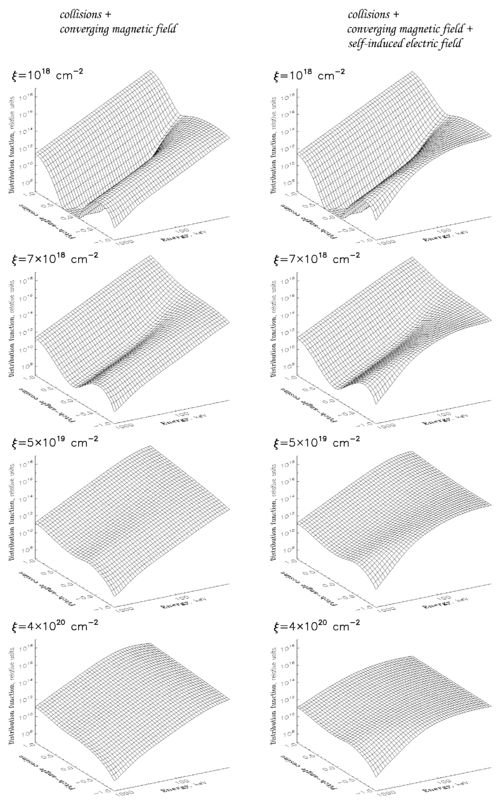Electron beam anisotropy during precipitation info a flaring atmosphere
From RHESSI Wiki
Nugget 1
Earlier studies using simple thick target models (Brown, 1971; Syrovatskij and Shmeleva, 1972) where electrons are only allowed to lose their energy in collisions without considering their pitch angle change or any other energy losses, revealed the “particle number” problem, when a total number of energetic electrons deduced from HXR observations during a flare required to accelerate the ambient electron of the whole solar corona within very short timescale less than 1 second which is very difficult to achieve with any acceleration mechanisms. Furthermore, often the electron numbers derived at some time period from HXR emission were insufficient to produce the observed MW emission at the same period (ref). This brought researchers to consideration of direction change mechanisms like magnetic field convergence (Leach and Petrosian, 1981; Vlasov, year) which allowed to mirror some part of electrons (smaller or bigger ones depending on the convergence magnitude) back to the corona and to account to some extent for the observed MW emission versus HXR one.
However, for a close match of this ratio flux tubes with a very strong non-realistic magnetic field convergence of up to 105 were required which leads to a suggestion that magnetic field magnitudes on the photosphere reach up to 100 kilogauss contrary to 0.5-7 kG measured. This problem required to revisit the issue of electron energy losses and include the Ohmic losses in the electric field induced by the beam electrons themselves with either quasi thermal (Diakonov and Somov, 1988) or power law, MClements, 1992, Zharkova et al, 1995) distributions by solving Fokker-Planck equations for distribution functions of electrons precipitating into a flaring atmosphere.
In this nugget, we compare electron distribution functions obtained for different energy loss (collisional and Ohmic) and angle change mechanisms (by electric and converging magnetic field) by solving the kinetic Fokker-Planck equation (Siversky and Zharkova, 2009). The energetic electrons are assumed to be injected at the top of the flaring loop. Movies 1-3 show the process of particle propagation in time as a function of energy and pitch angle for different times after injection, the electron energy spectra and ambient plasma heating variations. Movie 1 shows the precipitation of beam electrons injected within a short time scale of 30 ms with the energies from 10 to 500 keV for the collisional plus pitch-angle scattering model, movie 2 – for the same as in the movie 1 plus a magnetic field convergence. Movie 3 shows a steady state injection of the electrons for the same model as in movie 1 plus including Ohmic losses in their own electrostatic electric field. It can be seen that without magnetic field convergence high energy electrons reach very deep atmospheric levels in the photosphere where the ambient heating starts and quickly return back to the source if magnetic mirroring is involved. For s steady beam injection one observes a formation of an electric circuit of precipitating and returning electrons mostly with energies below 100 keV, that establishes in about 70 ms for the beam with energy flux of 10^10 erg/cm^2/sor 120 ms for the beam 00 time more intense (Siversky and Zharkova, 2009). Therefore, after the injection onset electrons begin to circulate between the loop top and the footpoints and this circulation exists as long as there is the injection of the electrons on the top (Siversky and Zharkova, 2009). This process is also shown in Fig. 1 where the electron distribution functions are plotted at the injection point (left) and at the chromospheric levels.

